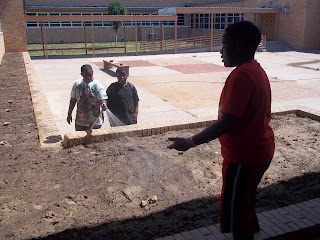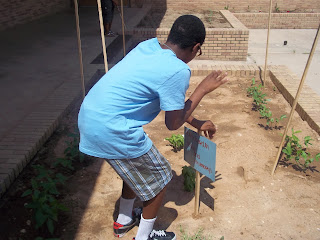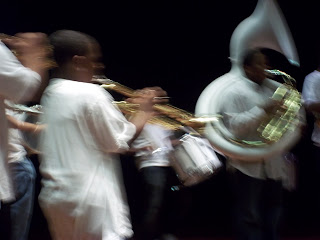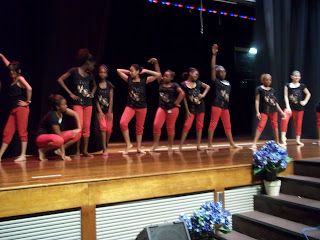Habari Gani??!?!
Ujamaa!!!
The term Ujamaa is Swahili for “cooperative economics”. It is a term that is practiced very little in the black community. Even personally, I am working harder to learn how to be more economically cooperative in my own community. This term should not only be thought of and promoted during the celebration of Kwanzaa but in everyday lives of citizens of the international Black community.
Therefore, I chose to take this time to challenge you to not only recite, celebrate, or talk about this term or principle for a short period of time. I would love for us all to practice what we preach!!! Yes! You and I both can show more financial support of our own endeavors. There is one project that I am quite fond of and dedicated to, that project is called The Marcus Garvey Liberation Garden. (For those unfamiliar with the project please visit www.marcusgarveyliberationgarden.com)
In the course of administering this service to our community we are rapidly approaching our third year of service. Just as last year, each moment that passes represents another step we must take in becoming more diligent and efficient in providing the greatest amount of benefits to the community in which we exist. To be able to feed more families and continue to increase the supply of healthy produce in the middle of a food desert, we need your support in the terms of “cooperative economics”.
We have grown a great deal since we first planted seeds in our garden in March of 2009. In the time of our existence we have expanded from a garden of 325 square feet into the size of a small farm with a cultivated area close to a half of an acre, if not more. To continue growing at the rate that we are, we will always be in need of your financial support. Our current situation calls for us to purchase a storage shed and supplies to install an irrigation system. These two tasks are not the easiest things to do, nor are they out of our reach with the support of wonderful and beautiful people just like you!
We all hope that you choose to practice “cooperative economics” by making a financial contribution to our project. Regardless of whatever it is that you choose to do, please remember we are not the only community organization that could use your financial support. Most importantly, remember that money is not everything. The assistance of your two hands, your creative ideas, and your ability to spread the good news about any project is just as meaningful as any financial donation that can be made. Your thoughts, prayers, physical assistance, and moral support are worth more than anything that can be printed on paper and has the capacity to create a currency of our own. The currency of Love! So give Love! Cooperate Economically!!! However, don’t just give your money; give your community a piece of yourself!
For more information on The Marcus Garvey Liberation Garden contact Cavanaugh Nweze @ cnweze@hotmail.com or (832)262-8019.
Ujamaa!!!
The term Ujamaa is Swahili for “cooperative economics”. It is a term that is practiced very little in the black community. Even personally, I am working harder to learn how to be more economically cooperative in my own community. This term should not only be thought of and promoted during the celebration of Kwanzaa but in everyday lives of citizens of the international Black community.
Therefore, I chose to take this time to challenge you to not only recite, celebrate, or talk about this term or principle for a short period of time. I would love for us all to practice what we preach!!! Yes! You and I both can show more financial support of our own endeavors. There is one project that I am quite fond of and dedicated to, that project is called The Marcus Garvey Liberation Garden. (For those unfamiliar with the project please visit www.marcusgarveyliberationgarden.com)
In the course of administering this service to our community we are rapidly approaching our third year of service. Just as last year, each moment that passes represents another step we must take in becoming more diligent and efficient in providing the greatest amount of benefits to the community in which we exist. To be able to feed more families and continue to increase the supply of healthy produce in the middle of a food desert, we need your support in the terms of “cooperative economics”.
We have grown a great deal since we first planted seeds in our garden in March of 2009. In the time of our existence we have expanded from a garden of 325 square feet into the size of a small farm with a cultivated area close to a half of an acre, if not more. To continue growing at the rate that we are, we will always be in need of your financial support. Our current situation calls for us to purchase a storage shed and supplies to install an irrigation system. These two tasks are not the easiest things to do, nor are they out of our reach with the support of wonderful and beautiful people just like you!
We all hope that you choose to practice “cooperative economics” by making a financial contribution to our project. Regardless of whatever it is that you choose to do, please remember we are not the only community organization that could use your financial support. Most importantly, remember that money is not everything. The assistance of your two hands, your creative ideas, and your ability to spread the good news about any project is just as meaningful as any financial donation that can be made. Your thoughts, prayers, physical assistance, and moral support are worth more than anything that can be printed on paper and has the capacity to create a currency of our own. The currency of Love! So give Love! Cooperate Economically!!! However, don’t just give your money; give your community a piece of yourself!
For more information on The Marcus Garvey Liberation Garden contact Cavanaugh Nweze @ cnweze@hotmail.com or (832)262-8019.




























































































































